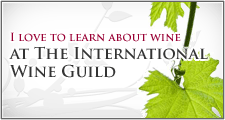Often it is that whimsical and hopeful part of us that likes to believe we live in new, exciting and changing times. But, while our version of new, exciting and changing may certainly be manifested in a different way than the version our grand parents and great-grand parents experienced, it is nevertheless the nature of human invention and creativity to constantly live in new, exciting and changing times. This is not so with Wine Making. For largely the last thousand years, wine making used the same methods and acted upon the same biases. Now - today - that is all changing before our eyes. We really are living in new, exciting and changing times in the world of wine.
While the last thirty years have been but a blip on the radar screen in the long history of wine production, they will surely be marked as the time when everything changed. What does this mean? It means that while grape growing has been taking place in different parts of the world for quite some time, this is the time when relatively new wineries like those in the United States, Australia, New Zealand, South America and even South Africa are bringing something new to the table. For the first time history, there is the actual study of wine making and wine growing emerging as a scientific field in its own right, thanks to the efforts of places like U.C. Davis in California. Similarly, new technological innovations are making it possible to produce white wines that are as demanding, complex and elegant as their red wine brethren who have dominated the scene since the very first grape fermentations.
The crux of the revolution is the meeting of ideas. It is the old world of wine making meeting the new world of wine making. Old world wine growers like those in France, Italy and Spain founded a tradition based on the notion of terrior - that a wine’s character and complexity comes from the land in which the grapes are grown; that everything heavenly about wine comes from a single plot of land that is different in ways too vast and subtle to fully understand; that the vineyard is a sacred work of subtlety.
The new world, on the other hand, is trying to make itself heard. True to the pioneering spirit that drove immigrants from all over the globe to settle in places like the United States, new world wines are full of big ideas and big innovations. The new world has helped turn wine growing and wine making into a science (viticulture and viniculture respectively). It has also renewed an interest in exploring the depth and excitement in individual grape varietals, rather than focusing on mixing and matching. Perhaps most importantly, it has encouraged the old world vineyards to break out of their shells and start taking some risks.
The meeting of these two ideas is profound. New options are coming to the table everyday for wine makers, and where the fear of having only twenty to thirty seasons in a career to get it right used to be paralyzing, now it is invigorating. The new wine maker in today’s wine culture is the master of his or her destiny, equipped with the tools and knowledge to know what went right and what went wrong in the past, and what might be possible tomorrow.
The Wine Drinking Revolution
The revolution is not just occurring in the wine making arena, it is happening at out dinner tables. Wine has had a tendency to carry with it a stigma of elitism and snobbery. This is particularly true for countries like the United States that are unfamiliar with the European style of enjoying wine. All over the world, it was believed that to truly understand and enjoy wine you had to embark on a lifelong quest to memorize vineyards and grapes. The whole thing sounded encyclopedic and academic – something that goes against the very heart of the role wine can play in our every day lives.
Today, it is true that there is more information than ever available on wine. The internet is partly responsible, but so are the many wonderful wine lovers across the globe that are writing books, publishing magazines and starting wine shops in a way that embraces the idea that wine is for everyone. Even sommeliers are less likely to be snobs - egging you on to buy an expensive bottle of wine you should like, and more likely to get to know you, your tastes and your budget and offer some friendly suggestions.
For countries outside of Europe, the idea that wine is a part of every day life, like the sunset, is starting to take hold. Something that was once reserved for special occasions is now being enjoyed daily without the anxiety and foreboding that used to accompany it. Walking into a wine merchant is even becoming a pleasant experience, as new style wine merchants, like new style sommeliers, are more friendly, more educated and more informative than ever.
And how can we look over the internet! The internet has served to not only make volumes of information available at the click of a button, but it has also offered new opportunities to the wine consumer like wine clubs. There’s no better way to get to know the world of wine than having reputable merchants hand-pick wines from all over the world and send them to you with tasting notes.
This is also the part where the revolution in wine making and the revolution in wine drinking collide: more high quality wines from more places in the world are available at prices lower than ever. Finding an enjoyable and distinctive $10 bottle of wine is now not only possible, but actually easy!








